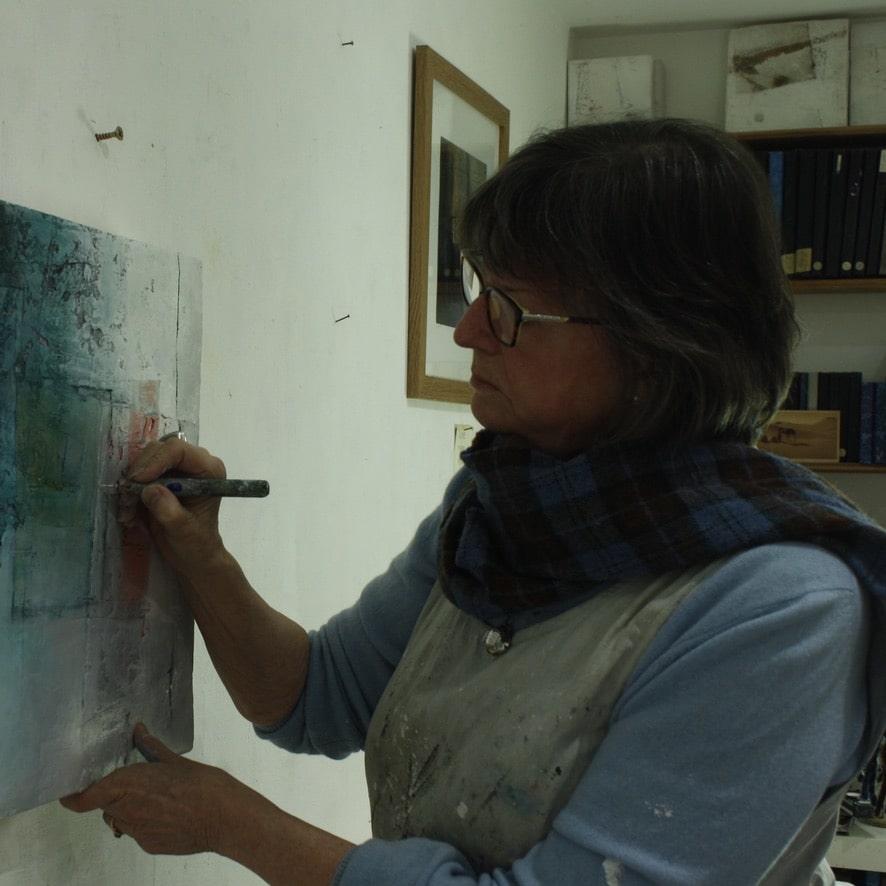Art Critic Nicholas Usherwood describes paintings by Michèle Griffiths as:
Meditations on surface and depth, illusion and reality, their painterly touch and mark synonymous with their mood of contemplative stillness
Initially steered towards an academic career, Michèle obtained a joint Honours Degree in Modern and Medieval Languages at Girton College Cambridge, where she also acted and designed a theatre set.
Following a Postgraduate MA course in Modern and Cultural Studies in London and a year in Italy, she taught French and German in London Secondary Schools and attended Life Drawing evening classes. In her thirties, she survived a life-threatening operation, and it was while she was in hospital that it became very clear to her that she had to pursue her dream of going to Art School.
Art was always her first love and by now she was already doing a 2 year part time Diploma in Painting and Drawing at Putney College of Art and Design. She applied for and obtained a place at Wimbledon College for a full time BA Honours degree course in Fine Art: Painting. Here, with eminent tutors including Prunella Clough, the path was set for her to develop her own unique voice as an abstract painter
